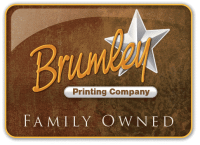 As a small business owner, you work hard for every penny you make. So it makes sense to save whenever possible. In some cases, it makes sense to go with the more economical choice. While stocking your break room shelves with gourmet coffee and china cups would be nice, for most businesses, they’re luxuries they simply can’t justify. The key word is “justify” not “afford.”
As a small business owner, you work hard for every penny you make. So it makes sense to save whenever possible. In some cases, it makes sense to go with the more economical choice. While stocking your break room shelves with gourmet coffee and china cups would be nice, for most businesses, they’re luxuries they simply can’t justify. The key word is “justify” not “afford.”
Opting for the economical choice doesn’t necessarily mean your business can’t afford the high-dollar alternative. But unless the high-dollar product or service actually helps your bottom line, why spend the extra money? It all boils down to Return on Investment.
Unfortunately, many small businesses don’t consider the potential ROI when it comes to their business cards.
What Does Your Business Card Say About Your Company?
In most cases, you give your business card to a prospect after pitching your products or services. You’ve no doubt discussed all the reasons the prospect should do business with you – things like your years of experience, your commitment to quality and customer service among others. At the appropriate moment, you reach into your pocket and take out your business card. Ask yourself, “does my business card reinforce all the claims I made to the prospect?”
Business Card Design Elements
Having a creative, well-executed logo will make your business card more memorable. But a logo that has no clear relation to your business name or what your company does can be confusing. Avoid the temptation to use clipart in your logo or your overall design. Design elements that overpower the text can also be bad. When the prospect is ready to call you, you don’t want her to have to get our a magnifying glass in order to read the number.
Keep it Simple
Your business card is primarily a convenient way to give prospects the basic information about you and your company. Filling it up with lists of services or products you offer can leave little room for the important information you want the prospect to have, including your website address.
By the same token, you don’t want to be vague. Depending on your business model, it might be better to sum this up with a catchy slogan or tagline. Again, your business cards should include your website address and your website should provide all the details your prospects need about your products or services.
Use Quality Cardstock
How your business card feels can have a huge impact on prospects’ perception of your company. Don’t go with cheaper cardstock that feels flimsy. The most popular cardstocks for business cards are 14 point, 16 point, and 100 lb. gloss cover. Any good commercial printer will be able to help you select a quality cardstock that matches your needs and budget.
Consistency is Key
The look of your business card should be consistent with that of your website, brochures, promotional products, and other marketing collateral. This includes being consistent with your color palette. This is an area where it pays to use a reputable, local printer instead of using an online printing source. Most online printing services don’t provide physical proofs of their work, and things like computer monitor color temperature profile settings and the ambient light can make it hard to get accurate color representations.
We hope these tips are helpful. Give us a call at 817-336-5551 if you have other questions about business card printing in the Dallas/Fort Worth area. We’ll be happy to answer all your questions.
